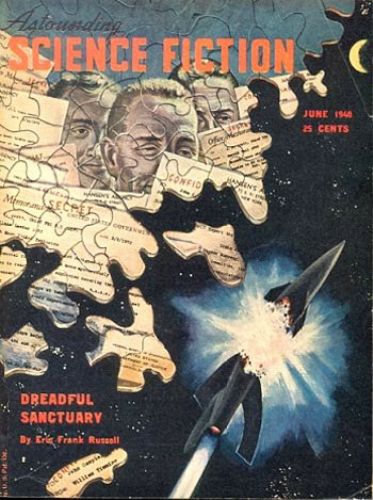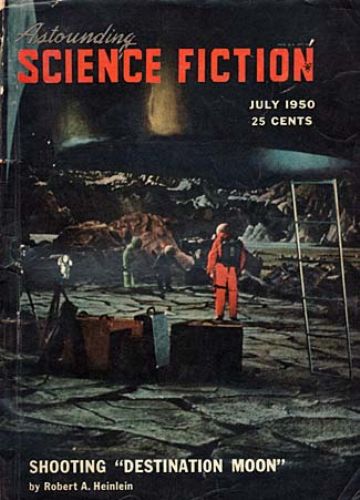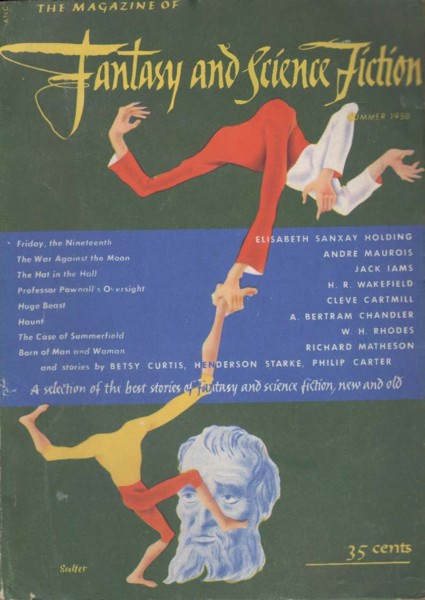by James Wallace Harris, Tuesday, December 19, 2017
Christmas came early this year for me. I’ve been wishing since 2002 for an audiobook edition of The Science Fiction Hall of Fame Volume One and my wish was finally granted sometime after midnight this morning. (For non-Audible.com members there’s a CD version but it’s $45.)
 The Science Fiction Hall of Fame Volume One is probably the most loved science fiction anthology of all time and comes in #1 at Goodreads list of Best Science Fiction Anthologies. The Science Fiction Writers of America (SFWA) voted for its contents when they formed in 1965 to recognize the best science fiction stories published before the Nebula Awards were created. The anthology was edited by Robert Silverberg and first published in 1970.
The Science Fiction Hall of Fame Volume One is probably the most loved science fiction anthology of all time and comes in #1 at Goodreads list of Best Science Fiction Anthologies. The Science Fiction Writers of America (SFWA) voted for its contents when they formed in 1965 to recognize the best science fiction stories published before the Nebula Awards were created. The anthology was edited by Robert Silverberg and first published in 1970.
Just after five in the morning, I began the download. Sitting in the dark with my headphones I sampled the stories. There are 26, narrated by an array of professional readers that bring these tales vividly alive to my ears. I’ve long recognized that my reading skills are poor compared to the hired guns of the audiobook world. Since I joined Audible.com in 2002 I’ve been searching out all the science fiction I loved in my youth to reread by listening. When I hear these old favorite stories it’s like when Dorothy opened that door in The Wizard of Oz and the black and white movie switched to Technicolor. I get so much more from hearing than when I read with my eyes.
The pulp fiction punch came through right from the first with “The Martian Odyssey” by Stanley G. Weinbaum. Science fiction is often attacked as poorly written, yet while I jumped from story to story sampling how each sounded, I felt the writing was lovely and vivid. Each story began with distinctive details that envisioned a uniquely imagined concept. Sure, this is pulp fiction, but it’s pulp fiction at its classic best. These old stories showcase how science fiction writers back then felt compelled to invent a novel idea to fictionalize. I often read stories today that improvise off these original themes.
These stories all get their own entries in Wikipedia, which attests to their longevity. I’m borrowing this table from Wikipedia in case you want to read about them and their authors.
I consider”A Rose for Ecclesiastes” by Roger Zelazny the epitome of pulp science fiction style, and the story I was most anxious to hear. It came out in 1963 just before the Mariner IV mission to Mars forever ruined the planet for pulp fiction adventure. After NASA science fiction had to grow up and accept a new reality. Mars and Venus could no longer be home to ancient races, and “A Rose for Ecclesiastes” is a wistful elegy of an era.
It’s quite elegant that The Science Fiction Hall of Fame Volume One begins with “A Martian Odyssey” and ends with “A Rose for Ecclesiastes” using the two best short stories about Mars as bookends for the anthology. These stories are the sense of wonder of my childhood. I can’t recommend this anthology highly enough. It captures the essence of the science fiction that baby boomer SF fans discovered in the 1960s and defined the genre for us.
I thought I’d close out this essay with cover images that first featured these stories. What’s funny is many of them didn’t make the cover art — which is a pity. Makes me wonder if the editors didn’t recognize their greatness at that time, or if they thought other stories were superior. I’m also going to include the link to the story’s Internet Science Fiction Database (ISFDb) entry so you can see how often it’s been anthologized over the years.
My many thanks to the gods of the audiobook world. You have given me many hours of happiness.
A Martian Odyssey – by Stanley G. Weinbaum

Twilight – by John W. Campbell

Helen O’Loy by Lester del Rey

The Roads Must Roll by Robert A. Heinlein

Microcosmic God by Theodore Sturgeon

Nightfall by Isaac Asimov

The Weapon Shop by A. E. van Vogt

Mimsy Were the Borogoves by Lewis Padgett (Henry Kuttner and C. L. Moore)

Huddling Place by Clifford D. Simak

Arena by Fredric Brown

First Contact by Murray Leinster

That Only a Mother by Judith Merril

Scanners Live in Vain by Cordwainer Smith

Mars Is Heaven! by Ray Bradbury

The Little Black Bag by C. M. Kornbluth

Born of Man and Woman by Richard Matheson

Coming Attraction by Fritz Leiber

The Quest for Saint Aquin by Anthony Boucher

Surface Tension by James Blish

The Nine Billion Names of God by Arthur C. Clarke

It’s a Good Life by Jerome Bixby

The Cold Equations by Tom Godwin

Fondly Fahrenheit by Alfred Bester

The Country of the Kind by Damon Knight

Flowers for Algernon by Daniel Keyes

A Rose for Ecclesiastes by Roger Zelazny

JWH

Wow, just look at the lineup in that November 1950 issue of Galaxy (“Coming Attraction”). Asimov, Boucher, Brown, deCamp, Knight, Leiber, and Simak! So sad that the current generation of readers probably wouldn’t recognize any of them, with the possible exception of Asimov. And just looking at all the names on the “Star SF” anthologies makes me want to rush and dig them out of storage to re-read. Such a lot of good stories and artwork over the years just from this one rather small genre. (like tears… in rain)
The worst is thinking about all the stories I never even got a chance to read. And if I did read them now of course, many of them wouldn’t have the same flavour – not just because of the changing times, but also because I’m no longer the same optimistic person with a lifetime still ahead of me.
Still my favorite science fiction anthology, hands down. DANGEROUS VISIONS beat it into second place in the last Locus All Time Poll with an anthology category—I think that was in 1999—but however seminal Ellison’s book was, the Hall of Fame is a much more enduring testimonial to the illustrious history of the genre. It’s very dated now, and I wish the SFWA would publish a similar volume, compiled the same way, to cover the time since 1965. Or better still, a series of several volumes. Sigh. One can but wish.
Oh my brethren, I wish you the joy of rediscovery. And if not, the joy of discovery in a new world, albeit one 40+ years after the initial discovery (aka publishing) of these works for young people.
I grew up on Freddy The Pig, Andre Norton’s juveniles, and Heinlein’s teen works. It didn’t take me very long to find Galaxy, F&SF, and Astounding and their stories to launch my own thoughts and ideas about the future (and of course Popular Mechanics, Mechanix Illustrated, etc).
After all those years, the first giant bell-ringing story for me was “World of Ptavvs” by Larry Niven. That sent me back into the archives and found The Lensman series by E.E.Doc Smith, L.Sprague de Camp’s various works and a whole world of F&SF that I’d never read before.
How can we ever bring that magic into this current world of instant and digital access? Especially since it is all about the “words” and the writing, and not about fancy digital effects and (usually) sad results?
Once the word is only the entry into another world, what is left for the imagination?